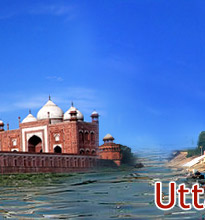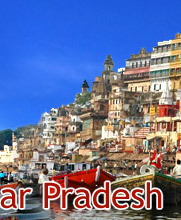 Jhansi
Fort is not only one of the best-fortified areas in Uttar Pradesh but
also one of the best fortified in India. Raja Bir Singh Deo of Orchha
commissioned this fort in the early 17th century. The fort was earlier
built on the top of the hillock in order to act as an army stronghold
and garrison but was later modified in to residential quarters.
Jhansi
Fort is not only one of the best-fortified areas in Uttar Pradesh but
also one of the best fortified in India. Raja Bir Singh Deo of Orchha
commissioned this fort in the early 17th century. The fort was earlier
built on the top of the hillock in order to act as an army stronghold
and garrison but was later modified in to residential quarters. The fort saw lots of ups and down in the course of history. The fort was a major stronghold during the Sepoy mutiny of 1857. The revolt in Jhansi was led by none other than Lakshmi Bai, popularly called Jhansi ki Rani in the chronicles of history. Just below the walls as you approach the fort, is a bizarre blood-and-guts diorama of the battle in which the Rani of Jhansi died. In June 1857 when the mutiny arose, a few men of the 12th native infantry seized the fort containing the treasure and magazine, and massacred the European officers of the garrison. The Rani put herself at the head of the rebels. In early 1858, the combined army of two magnificent Generals of British Arm Force named Lieutenant Walker and General Huroze defeated Lakshmi Bai.
The British ceded the fort to the maharaja of Scindia in 1858, but later exchanged it for Gwalior in 1866. The Fort offers excellent views from the ramparts. Beware of the band of aggressive monkeys by the temples here. The Karak Bijli tank is within the fort. There is also a museum that has good collections of sculpture and provides an insight into the history of Bundelkhand.









